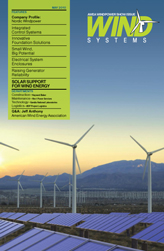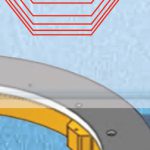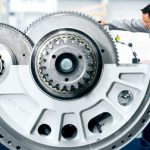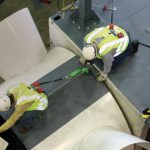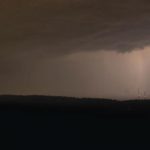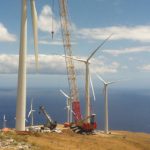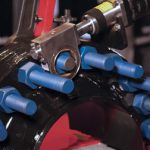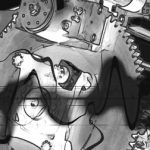As the giants of the wind industry gather for WINDPOWER 2010, the American Wind Energy Association (AWEA) is projecting that this year’s show will be the biggest yet. Walk the show floor and you will no doubt be overwhelmed by the size of the booths, the scale of the equipment within them, and the huge interest shown by industry members. Given that the event takes place in Texas, it should surprise no one that BIG is a major theme, but what about small… as in the small wind industry?
Lurking among these literal giants is the small wind industry. Generally referred to as turbines with 100kW capacity and less, the small wind industry is enjoying incredible growth as homeowners and businesses around the country take advantage of an uncapped 30-percent federal tax credit and improved technologies that make harnessing your own clean energy easier than ever before. AWEA reported that the U.S. small wind market grew by 78 percent in 2008, and it is expected to release similar figures for 2010. How do these two dichotomies of the industry go together? Is it possible that small wind can actually help big wind?
Few members of the industry realize that AWEA was founded by a group of small wind enthusiasts in the seventies during a time of incredibly high oil prices. The first conference was timed to coincide with the World Energy Conference in Detroit, Michigan, and was attended by 20 people. AWEA’s first president, Allan O’Shea, reminisces about the early days when the industry focus was on small wind. “When we—me and 15 other founding fathers—started AWEA it was under the premise that small wind begets big wind,” he says. “We got together and put up a wind-powered billboard welcoming the World Energy Conference, because at the time they were only talking about oil.”
While big wind is generally sited far away from the urban and suburban centers of most communities in order to avoid noise pollution and height restrictions, with shorter towers and quieter systems small wind turbines are designed to be installed in the heart of communities. By having turbines on display in inhabited areas, more people within the general community gain firsthand exposure to wind power. Figure 1
“It makes it real to people,” according to Dan Loundy, vice president of Devon Bank in Chicago, Illinois. Loundy installed six 1.2kW vertical axis wind turbines at the bank’s newest retail branch to help with energy costs and to make a statement to the community about the bank’s commitment to being green. “When it’s out in a field it’s what some other guy is doing. Until you see it on a regular basis, it’s an abstraction,” he says, adding that he even installed benches below the turbines to encourage the community to interact with the technology. Figure 2
This accessibility of small wind turbines gives the public the opportunity to live with the technology on an everyday basis. This can lead to a better understanding of how wind power works, while at the same time addressing classic concerns such as noise, wildlife, and the visual impact that often hamper large wind installations. Acceptance of wind power on a small scale can lead to acceptance of wind power on a big scale. Think of it as traditional product sampling done by packaged good marketers. The concept is to give a taste test that is so satisfying the consumer will want more.
Spirit Lake, Iowa, is an example of a community that used small wind to “taste test” future wind power development. The community started with the installation of a 250 kW system at a local school in 1993. In 2001 the school district installed a 750 kW system based on the success and community support for the original turbine. The community eventually welcomed multiple large wind farm developments. Not surprisingly, Iowa now hosts 22 MW of locally owned and 814 MW of commercial-scale wind.
“You go into any township and put in a small wind system and that ends the whole discussion about bird kill, fall zone issues, tower height, and sound,” O’Shea says. “All of the things that big wind has to deal with.”
Small Wind, Big Conservation
Few will debate that larger turbines are a more-efficient way to generate energy. But installing small turbines at the site of energy consumption, as you can uniquely do with small-scaled turbines, can create benefits that make up for any loss in efficiency.
A welcome side effect of on-site installations is that having energy generation right outside an office or home can impact energy consumption within the building. Suddenly energy doesn’t come from a switch or outlet in a wall, it comes from the turbine spinning just outside. Once people start thinking about where their energy is coming from they tend to start thinking about their use of this energy, and ways to conserve.
In fact, building operators and energy providers are using visible small wind installations as a tool to encourage building occupants to conserve the energy they can see being produced outside their windows. Leading software company Adobe Systems of San Jose, California, recently installed 20 vertical axis wind turbines at its corporate headquarters. “Adobe has a state of the art campus with a multitude of green attributes that have earned us three USGBC LEED-Platinum certifications, so our employees are very conscientious about their environmental footprint,” says Randall H. Knox III, senior director of Global Workplace Solutions at Adobe. “We believe the wind turbines are a positive enhancement to our headquarters, and that their presence will spur people to talk even more about conservation.” Figure 3
DONG Energy of Denmark is a leading European energy provider, and a market leader in the development and construction of offshore wind farms. DONG sees the value in installing small wind turbines at the sites of its energy customers, recently announcing plans to market vertical axis turbines throughout Denmark.
Jan Darville, manager of electric installations at DONG, recently told the International Herald Tribune: “It’s about starting a chain reaction of thinking green. If people see wind turbines outside their office window, maybe they’ll start thinking about what happens if everyone at the office actually shuts down their computer when the day is over, and all of a sudden energy usage is down 2 percent.”
Conservation is an important piece of the energy puzzle for big wind and all energy providers. If we can reduce overall energy use we can better control the availability of energy and the cost to provide it to consumers.
Small Wind, Big Future
Small wind turbines are also an excellent tool for wind-power education. If the U.S. is going to be the leader of clean energy, younger citizens need to get involved now. It is nearly impossible for most schools to install their own 1 MW turbines, but schools all around the country are installing 1-3 kW systems right on school property. Teachers are able to incorporate the installation into a full wind energy curriculum, exposing the students to a firsthand wind experience while preparing them for a future in wind energy. Exposed to the power of wind, these youths are more apt to embrace a future with larger turbines spread across their local landscapes and the policies that will be required to make this vision a reality. Figure 4
Caitlin Wargo is the director of sustainability and energy management at Far Hills Country Day School in New Jersey. She has recently ordered four 1.2kW wind turbines for the campus to compliment other renewable energy systems already installed. “It is our hope that by involving our students in our energy initiative, they will get a foundation in the issues surrounding renewable energy, from science and engineering to socio/political and economic,” she says. “Coupled with the critical thinking and leadership skills that are the hallmarks of a FHCDS education, our students will be ready to take their place as the leaders of tomorrow in renewable energy.”
Getting Started
As an industry, small wind is ready to help big wind overcome current market adoption barriers that will lead to growth. The technologies that are currently available are efficient, silent, and attractive, and a wide array of rotors—from traditional horizontal axis to innovative vertical axis designs—are available to meet individual design needs. In addition, the newly announced small wind certification program will ensure that the turbines are safe and tested. It’s time for big wind to start using small wind as a tool to grow the entire industry.



















